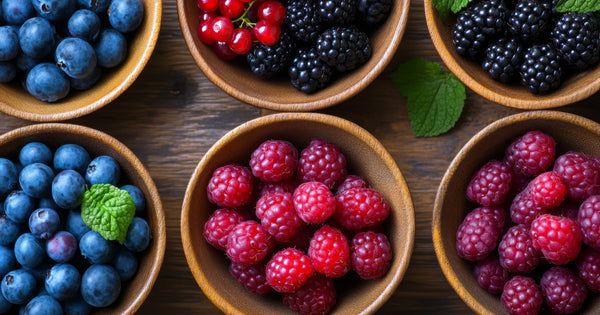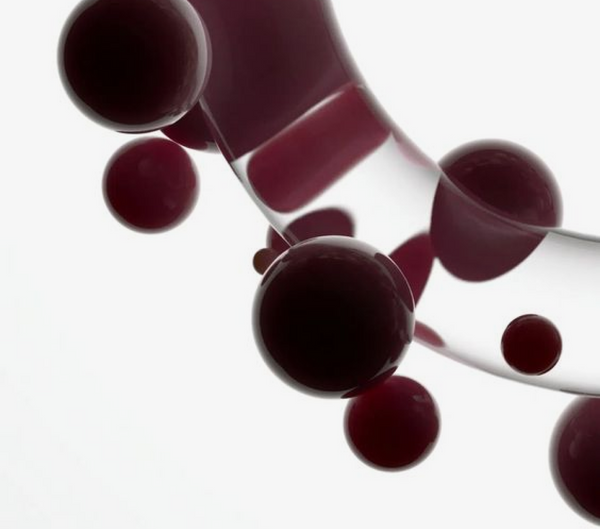Now Let’s Be Honest…What is the Difference Between “Natural” and “Organic”?
How many personal care products have you seen that are stamped with the labels, organic, and natural? Isn’t something that’s organic meant to be natural anyway? How are we to know the difference between them?
The marketing hype is confusing – and frustrating when we’re all trying to steer towards making better and more healthful choices for our bodies. Though there may be more and more clean products out there on the market, it can still be difficult to know which is the better option;
often what we’re promised on the label, does not reflect what’s inside.
Now let me explain…
What do the terms mean? One is actually very meaningful, while the other means nothing.
The term “Organic” means that the product is made with certified organic ingredients that are farmed under USDA Organic laws.; luckily in California this law means containing at least 70% of total organic ingredient content excluding water fillers. USDA organic products have strict production and labeling requirements. The label verifies that the product is “produced without excluded methods, meaning it’s produced in a healthful organic manner (e.g., without genetic engineering, ionizing radiation, or sewage sludge” – Yuk.), and produced with controlled and limited pesticides or synthetic fertilizers. If the product ingredients are not certified under these guidelines, it cannot bear the term “Made with Certified Organic Ingredients” nor can the personal care product use the term “organic” anywhere on the front label or in marketing claims.
With this being said, it can still be difficult to tell whether the products are good for you by just reading a label, as even though it may say “made with certified organic ingredients” which we know is at least 70% – the other 30% of the product’s ingredients could be questionable. Make sure that the first few ingredients on a product label don’t state anything other than certified organic ingredients, and you should ask the company if their standard is to exceed the 70% total organic content excluding water fillers. This is why it’s important to understand what the company stands for. It’s critical that the remaining ingredients filling the bottle are healthful and these can include natural food grade preservatives, zinc for SPF coverage, plant binders and more.
99% of Juice Beauty products meet this criteria and it is currently the “gold standard for personal care products. Juice Beauty also made a few Organic “food grade” products for fun, such as the USDA Organic Treatment Oil, USDA Organic Facial Wash, and USDA Organic Lip Moisturizer – these products carry the typical food USDA seal and contain a minimum of 95% organic ingredient content excluding water fillers.
What about natural?
The term “Natural” is as unregulated as using the word “best-selling” – it’s all a tactic that brands can use without any monitoring; to make you assume that what you’re buying is good for you. It’s like a case of the emperor’s new clothes! Tell us something so much, and we’ll believe it. But we all know the moral of that story – don’t believe what you’re told without empirical evidence! A product that says “natural” and doesn’t use “made with certified organic ingredients” means the company manufacturing this product has not purchased the majority of their ingredients from USDA Certified organic farms that have passed the health regulations mentioned above, and so their products can contain really anything.
“Natural” – Means that the product contains one or some ingredients that come from the earth. Your lip balm for example, may say “natural” because it contains 0.1% of real crushed coconut for flavoring. But the other 99.9% of ingredients can be anything else. See how we’re being fooled? Often, these non-chemical ingredients inside, strawberries for example, have been sprayed with toxic pesticides (hence not adhering to the USDA guidelines above) – the residue of which lives on in your products, and can possibly absorb into your body and runoff into our earth and streams… My skin is already itching at the thought of it.
“100% Natural” can really mean anything as this is not a regulated term, and products labeled with this term may still contain other toxic chemicals within its formulas. Fragrance in a product for example, can hide hundreds of endocrine disrupting chemicals within that one word.
“Eco-Cert Organic or EcoCert Natural” is super confusing because it’s a really catchy name. Eco-Cert is a European industry group that any company can join and gain the seal by simply using 10% organic content. This label is not a U.S. government legal claim in the United States and products that contain the label “eco-cert” cannot use any organic marketing claims in the United States since the total organic content is so minimal.
But why is the beauty industry allowed to tell so many half-truths?
The Food & Drug Administration (FDA) does not currently have authority to regulate ingredients used in cosmetics, nor to require safety testing before products hit the shelves, or to recall products once a toxic chemical is discovered. The responsibility lies with the cosmetic manufacturer or brand. This is how companies get their products, with potentially toxic ingredients, into your hands, because they are not required to file data on ingredients, or report cosmetic related injuries to the FDA.
Already over 1000 toxic chemicals that are common ingredients and preservatives in beauty and personal products have been banned in the E.U., whereas in the U.S., the FDA has banned approximately 10. “Many of these banned chemicals are considered safe in low doses by themselves,” said Nneka Leiba, a senior analyst at the consumer organization the Environmental Working Group (EWG), in a recent Newsmax Health article. “What we are concerned about, is the damage they can cause repetitively over time and synergistically with each other.”
This is why it’s so important to educate yourself on the ingredients in your products, and to research the companies that are making them.
Why you should care…
Some of the unregulated ingredients, are listed on our US government website as carcinogens – cancer causing, and have been linked to many serious health problems. Need I say more?
Using certified organic ingredients not only protects our health and the planet, but studies have shown that organically farmed crops can have up to a 30% higher antioxidant level than conventionally/naturally farmed ingredients. Since antioxidants can neutralize free radical activity, that can help in preventing skin damage, a higher antioxidant level in your products can result in more youthful, healthy looking skin.
It’s exciting that brands can achieve the highest efficacy for skincare and makeup PLUS use the healthiest ingredients and surpass the performance of “natural” and conventional, synthetic and chemical-laden beauty brands.
There are websites such as EWG’s Skin Deep database that can help you to make better choices by revealing the toxicity rating of a product, but while labels and ingredient lists are still annoyingly difficult to decipher, it’s best to simply choose products from brands who have values that you personally align with.
For example: no animal testing, made with certified organic ingredients, socially responsible giving, and sustainable company practices, such as sourcing locally (more likely to be better quality and truly organic) and using recycled and recyclable materials. Most company websites will visibly state all of their values, which allows you to make the judgment yourself. Juice Beauty focuses on sustainability from top to bottom and clearly states the ingredients that are NEVER found in our products on our “Unacceptable List.”
The post The Difference Between Natural and Organic appeared first on Juice Beauty Blog.


